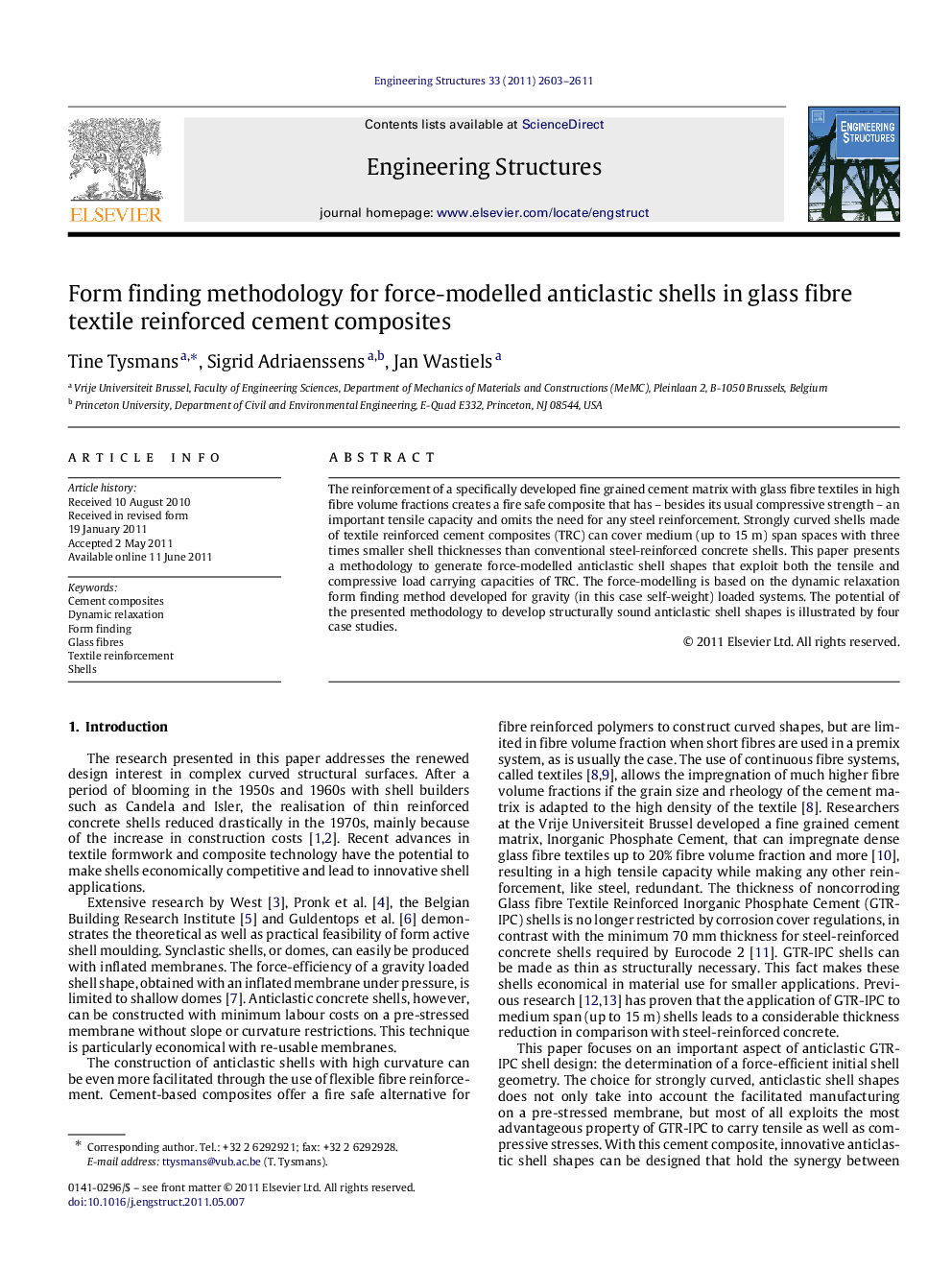| Article ID | Journal | Published Year | Pages | File Type |
|---|---|---|---|---|
| 267693 | Engineering Structures | 2011 | 9 Pages |
The reinforcement of a specifically developed fine grained cement matrix with glass fibre textiles in high fibre volume fractions creates a fire safe composite that has–besides its usual compressive strength–an important tensile capacity and omits the need for any steel reinforcement. Strongly curved shells made of textile reinforced cement composites (TRC) can cover medium (up to 15 m) span spaces with three times smaller shell thicknesses than conventional steel-reinforced concrete shells. This paper presents a methodology to generate force-modelled anticlastic shell shapes that exploit both the tensile and compressive load carrying capacities of TRC. The force-modelling is based on the dynamic relaxation form finding method developed for gravity (in this case self-weight) loaded systems. The potential of the presented methodology to develop structurally sound anticlastic shell shapes is illustrated by four case studies.
► Glass fibre textile reinforced cement composites are applied in anticlastic shells. ► Anticlastic shells exploit tensile and compressive capacity of cement composites. ► We develop a form finding methodology to generate force-modelled anticlastic shapes. ► The methodology is based on dynamic relaxation for gravity loaded systems. ► Four case studies of innovative thin anticlastic shells illustrate the methodology.
